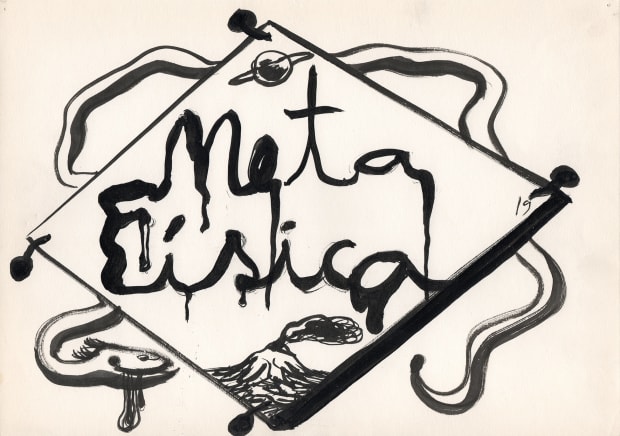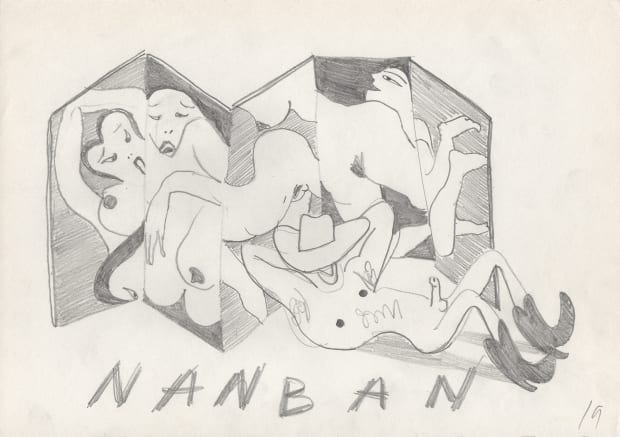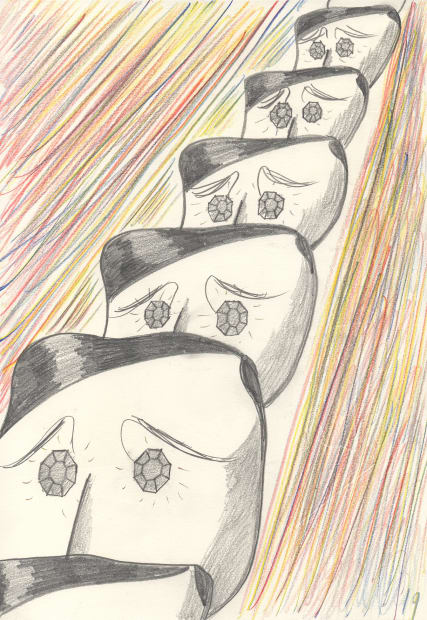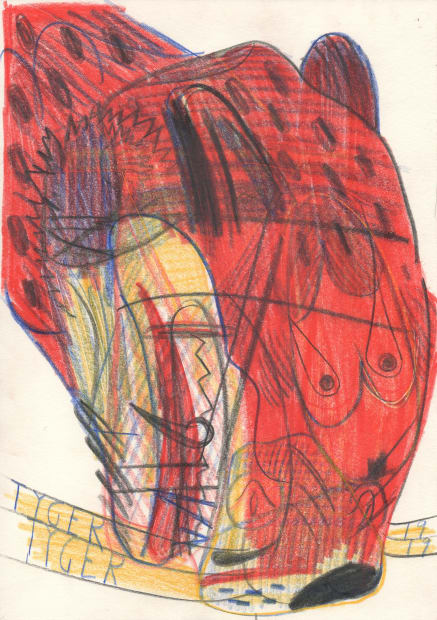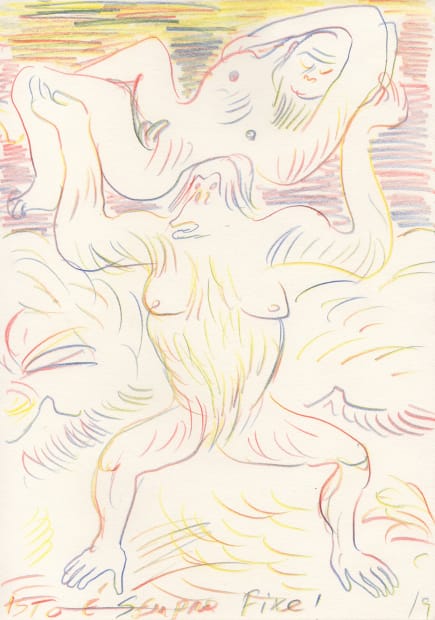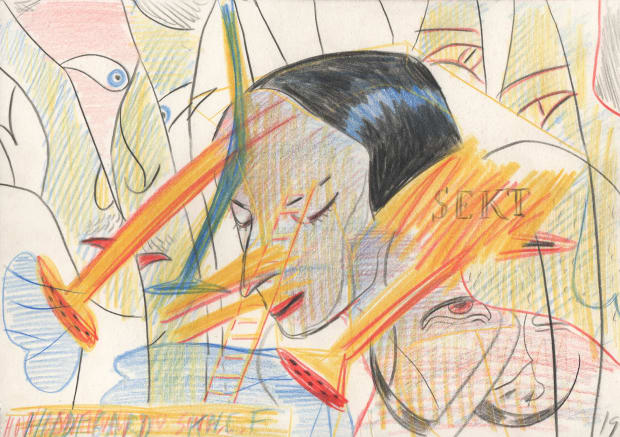-
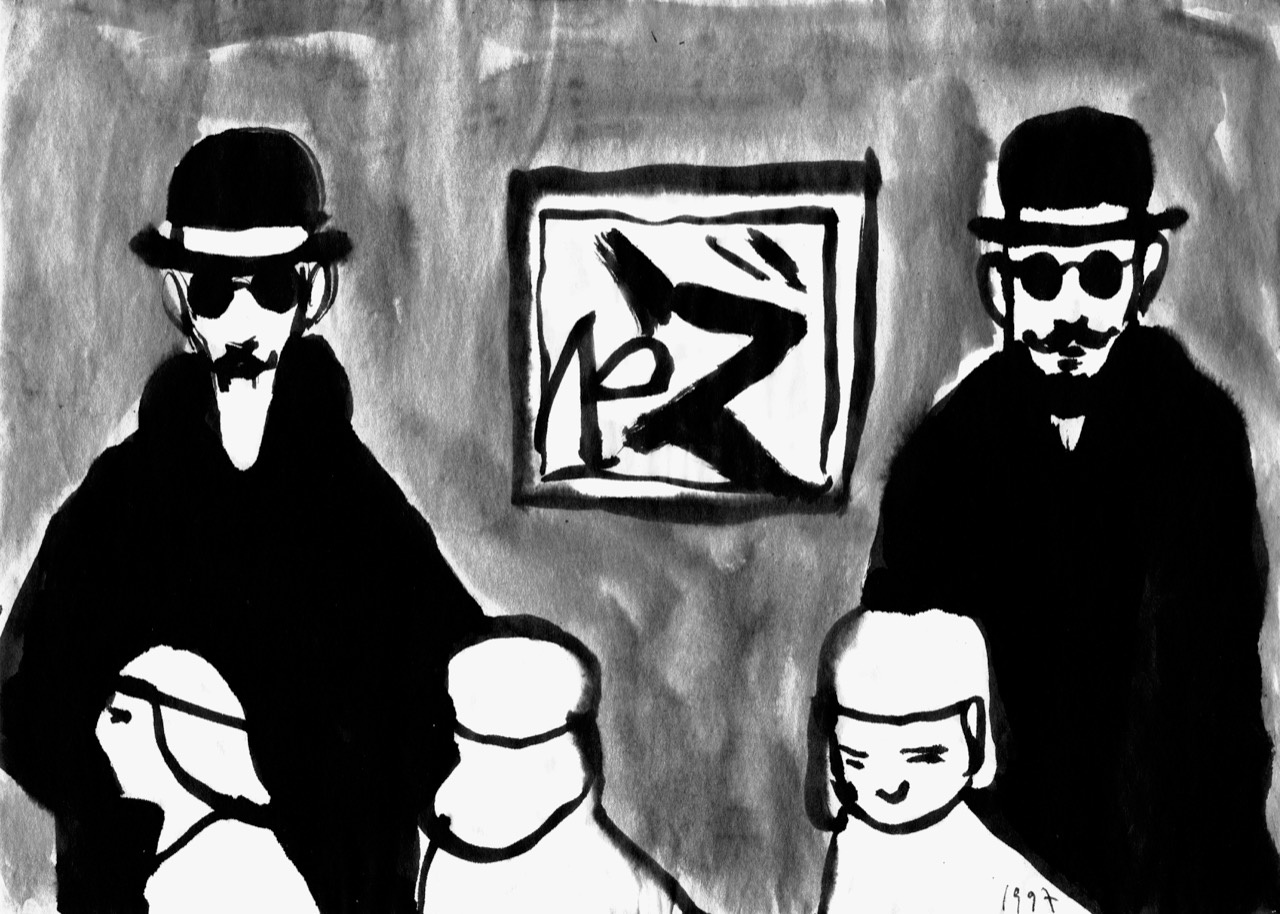
-
A spider with a hard-on, a spinach full of magic, a Russian serf sees himself as a reprobate*,
(*caption from a drawing by Gonçalo Pena)
Barbearia…
brings together a new selection of drawings from Gonçalo Pena's undisclosed box of graphical oddities.
These works will be included in a forthcoming monograph published by Mousse Publishing (with texts by Alexandre Estrela, Gabriel Abrantes, Pedro Paiva and João Maria Gusmão) to accompany an exhibition at the Serralves Museum, Porto.At home, framed and hanging on the wall of my study, is an Indian ink drawing by Gonçalo Pena dating from ‘97. In it, two figures, like the Thompson Twins from Tintin, are wearing bowler hats, black winter coats, hiding behind mustaches and sunglasses, and standing on either side of a modern abstract painting. The style of the drawing is gestural but precise. From the context, it is clear that they are in a museum – a Soviet one, incidentally – visited by lovers of the socialist fine arts and that the painting is by Mr. Kandinsky. The figures are no other than two KGB agents, who are guarding the valuable Muscovite treasure from being snatched. In addition to the interplay between the cultural context and the thing depicted, there is, I feel, something both familiar yet strange about the drawing. I have always been surprised by the clear physical likeness between the two agents and that of Pedro Paiva and myself. The one on the left looks like Pedro, and the other’s face is just like mine in disguise. If the drawing is from ’97, it anticipated the friendship and admiration that developed between us all by ten years. To me, this coincidence opens the door to the visionary dimension in Gonçalo’s work: Tintin goes to Moscow to retrieve Kandinsky’s masterpiece from Stalin’s clutches. The Thompson Twins are in fact double agents working on the other side of the Iron Curtain... Hidden covertly behind the famous abstract painting is the Holy Grail of selfless aesthetics. The Bolsheviks realize the subversive quality of the painting and take precautions; Tintin, on the other hand, imagines the rewards to be had if he can get the work of this genius to Brussels. The socialists undertake a covert operation against commodity fetishism in the visual arts.
Over the last decade, Pedro Paiva and I have organized various exhibitions of Gonçalo Pena’s drawings and paintings. We have published two books on his graphic work and have been closely involved in his artistic production. You could call Gonçalo a timeless aesthete: a music lover, film buff, bibliophile, polyglot and an incredible scholar of the history of painting and the image. Gonçalo’s work is the materialization of something truly unusual and preposterous. It presents the idiocracy of western man realized through his grossest contradictions: the chronicle of violence between ideological apparatuses and the people who perpetuate them. The aim is to expose the brittleness of the large collective projects that created the prevailing western myth of the history of the white man. Always present and called into question by Gonçalo’s work, either for their absurdity or for the purposes of denunciation, are the tragicomedy of neurotic and metaphysical desire; the pathetic prevalence of the phallic narrative and the incomprehension of female desire by structural and historical male chauvinism; the contrast between elitist intellectualism and the most bizarre vernacular; the crime of colonialism, the terror of war and the stupidity of fascism; the bankruptcy of the industrial revolution and the socialist ideology; the failed promise of modern and avant-garde forms; post-modernist pluralism; and so on and so forth... The humor is black and ambiguous, cynical, sometimes in bad taste and misanthropic. The imagery is sensitive, multi-stylized and at times punk and raunchy – a truly challenging and passionate ideographic study of the unconventional, the heterodox and the heretical. Above all, what is felt is the continual presence of an impossible political project that is the libertarian reverse of established ideas.
The drawings exhibited in this photonic showing are accompanied by short and extra-descriptive notes written by myself and fellow Pena enthusiast Chris Fitzpatrick to guide your virtual perusal of this artist’s idiosyncratic approach.
João Maria Gusmão, December 2020
-

-

-

-

-

-

-

-

-

-

-

-

-

-

-

-

-

-

-

-

-

-

-

-

-
Barbearia… by Gonçalo Pena
Past viewing_room

